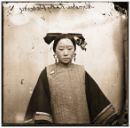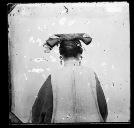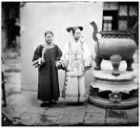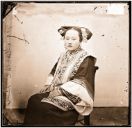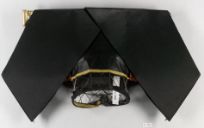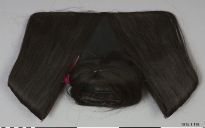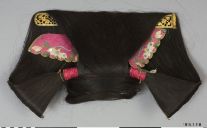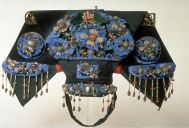Doing your hair a la Manchu
_The basis of the device consists of a flat strip of wood, ivory, or precious metal about a foot in length. Half of the real hair of the wearer is gathered up and twisted in broad bands round this support, which is then laid across the back of the head. I confess myself unable to explain the mysterious mode in which the tresses have been twisted, but careful study of the illustrations will, I doubt not, reward any lady who may desire to dress her hair “a la Manchu”.[Cf, p 50]
The description above by John J. Thomson (1837-1921) in 1871 describes the liangbatou that was popular in the 19th century. His pictures are the earliest examples of the liangbatou hairstyle. The liangbatou at the time consisted of a bianfang that held the shape of the hairstyle intact, with a top knot positioned at the crown of the head. As time went by, the liangbatou hairstyle developed into an even larger hairstyle, which was named the dalachi 大啦翅. It is this hairstyle which the barbie wears.
The dalachi, which still clearly resembled the liangbatou, used an even larger frame to reach an even greater height. An average dalachi’s height would be around thirty centimeters (one foot).[Cf, p 124] The framework consisted of a wire that was made to fit the head of the wearer, with a bianfang on top. The bianfang, which had become more of a decoration by this time, could be taken out in order to quickly remove the hairstyle. It would be layered with satin to make the headdress easier to wear. Moreover, the dalachi had a ‘swallow’s tail’, yanwei, at the back.Maintaining such a tail required a large amount of hair, for which horse hair would be used as an extension. [[Cf]][Ibid] The hairstyle is described clearly by Katherine Carl:
Formerly all Manchu ladies who have marvelous hair carried the hair itself out from this coil over a golden, jade, or tortoise-shell sword-like pin, into a large-winged bow. The Empress Dowager and the Ladies of the Court have substituted satin instead of the hair, for this wing-like construction, as being more practicable and less liable to get out of order. So satin-like and glossy is their hair that it is difficult to tell where it ends and the satin begins. A band of pearls, with an immense 'flaming pearl" in the center, encircled the coil. On either side of the winged bow were bunches of natural flowers and a profusion of jewels. From the right side of the head-dress hung a tassel of eight strings of beautiful pearls reaching to the shoulder.[Cf, p 9]
